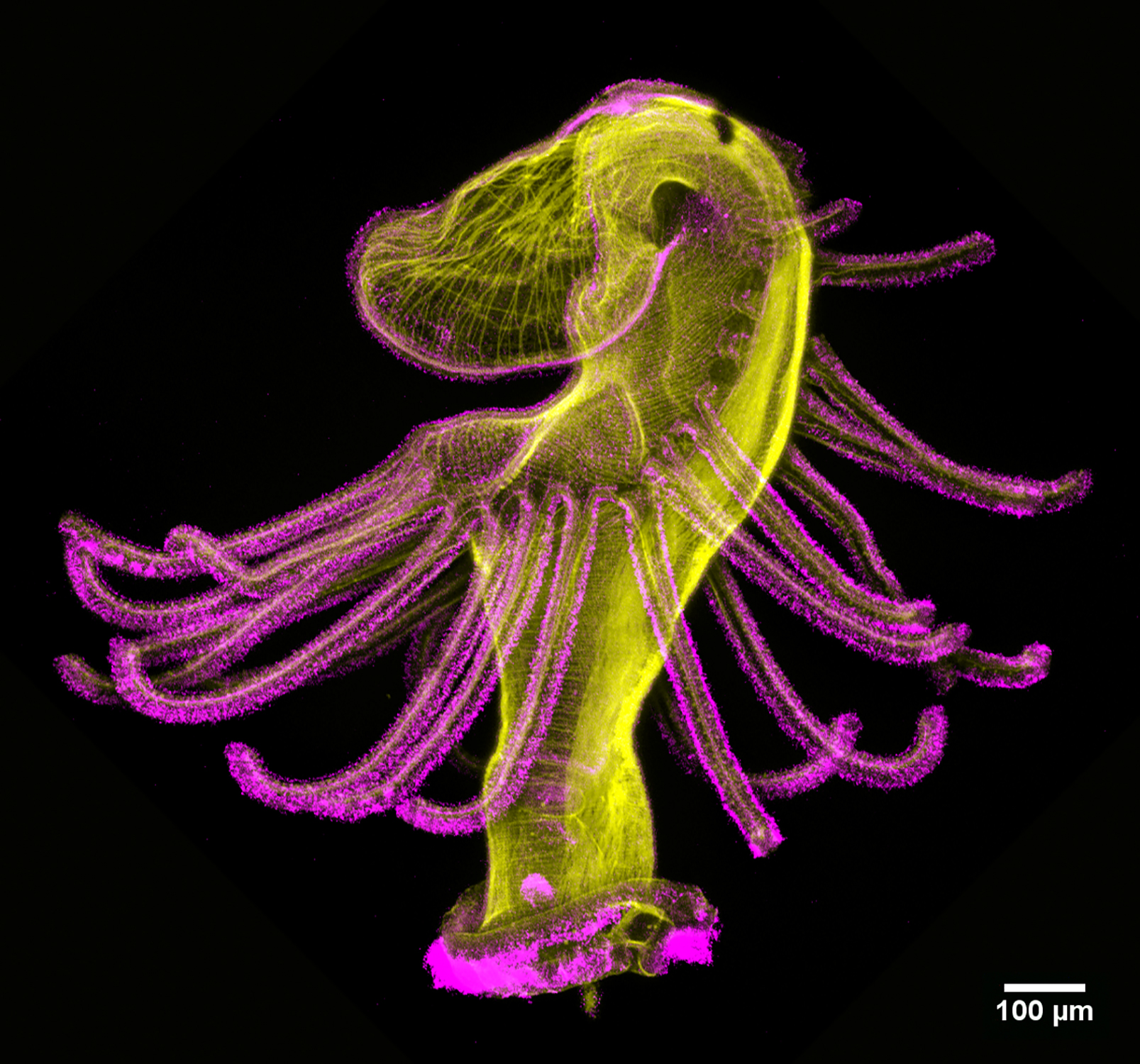Featured image with Allan Carrillo-Baltodano: the Node–FocalPlane image competition
Posted by the Node, on 10 April 2025
To accompany the Biologists @ 100 conference, we’ve partnered with FocalPlane to bring to you an image competition. We shortlisted 15 images and asked you to vote for your favourite online and in person at the conference. On the final day of the conference, we announced the top3 images of the competition.
In this ‘Featured image’ post, we find out more about the story behind Allan Carrillo-Baltodano’s image, which was one of the runners-up in the competition.

Allan Carillo-Baltodano
Actinotroch larva of a phoronid worm with phalloidin shown in yellow and acetylated tubulin in magenta. Imaged with a Zeiss LSM 800 at 10 x magnification.
What is your background?
I did my undergrad at the University of Costa Rica, in Costa Rica. Early on, I biased my interests towards invertebrate zoology, and ended up doing an undergrad thesis on marine zooplankton of coral reefs. It was back then when I saw the beauty of marine invertebrate larvae. I have been studying evolution and development (EvoDevo) of marine invertebrates since — first, during my PhD in Néva Meyer’s lab at Clark University in Massachusetts (USA), and currently as a postdoc in Chema Martín-Durán’s lab at Queen Mary University of London in UK.
What are you currently working on?
I study how body plans of marine annelids develop, and try to understand how different modes of development in these and other animals could have evolved.
Can you tell us more about the story behind the image that you submitted to the image competition?
The image shows a larva of a phoronid worm. The larva is commonly known as actinotroch, and it is very conspicuous among other members of the zooplankton community because of the tentacles surrounding the head. To swim the larva propels itself using cilia (shown in the image in magenta) concentrated in a ciliary band on the posterior part of the larva. The big hoodie you see at the top will open slightly so that food can be captured in the mouth. One of the wonderful things of the plankton is that if you are lucky, you can find any stage of development of these and many other amazingly weird invertebrates.
What is your favourite technique?
I like mostly confocal microscopy, although if a sample is nice enough, you can get some very beautiful images with DIC microscopy as well.
What excites you the most in the field of developmental and stem cell biology?
The breakthrough in technologies has really opened the door for many of us who like to study development in unusual research organisms. In combination with the EvoDevo field being more open and the growing interest in comparative biology across many species and many scales, we are creating a great environment for anyone to make new discoveries.


 (2 votes)
(2 votes)
An inspiring story from a very talented and hardworking scientist in the field of developmental biology. Thank you for making the microscopic marine invertebrate larvae visible to the world!